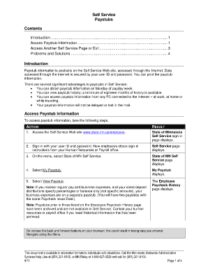
The only journal that is used by all companies is the general journal. Accounting journal entries are used to record financial transactions in the accounting system, and would be transferred from the journals and posted to the general ledger. A journal is a record of transactions listed as they occur that shows the specific accounts affected by the transaction. Used in a double-entry accounting system, journal entries require both a debit and a credit to complete each entry. So, when you buy goods, it increases both the inventory as well as the accounts payable accounts. A journal details all financial transactions of a business and makes a note of the accounts that are affected.
Generally in the cash receipts journal to debit columns for cash receipts and cash discount and three credit columns for accounts receivable, sales and other accounts are there. Cash received from various sources other than cash sales and account receivables are recorded in other accounts column. The journal entries are usually recorded using the double entry method of bookkeeping. Imagine that you own a small business and you get a water bill for $200. You would debit, or increase, your utility expense account by $200, and credit, or increase, your accounts payable account by $200. For accounting purposes, a journal may be a physical record or a digital document stored as a book, a spreadsheet, or data entered into accounting software.
He holds a Bachelor’s degree in Accounting from Syracuse University. Each of these journal entries would then be manually posted to the general ledger. If you’re thinking that sounds like a lot of work and a lot of opportunities for errors, you’re right. For example, if the loan is taken out for $10,000, the t-account for Notes Payable, would show a credit of $10,000 into the payable account, as well as a debit of $10,000 which would be marked Cash. Therefore, the journal, wherein the transactions which cannot be directly recorded in a particular journal are recorded, is called journal proper. But where such return transactions are very few in number, these are recorded in the general journal.
Lost in standardization: Effects of financial statement database discrepancies on inference
Accounting software also makes it possible for small business owners to do their own bookkeeping. A journal entry is a record of the business transactions in the accounting books forrester total economic impact study of a business. A properly documented journal entry consists of the correct date, amounts to be debited and credited, description of the transaction and a unique reference number.

Here it should be mentioned that most of the business organizations of our country are of small or medium size. These organizations maintain cash book for recording daily cash receipts and cash payments instead of maintaining cash receipt journal and cash payment journal separately. 7 types of journal books are maintained in accounting for the convenient keeping of accounts and recording transactions of similar nature. Under the double-entry system, there are mainly 7 different types of journal in accounting.
How to Track Journal Entries
When the supplies are delivered, she also receives invoice number 4987 from OfficeMart. With NetSuite, you go live in a predictable timeframe — smart, stepped implementations begin with sales and span the entire customer lifecycle, so there’s continuity from sales to services to support. Traders use journals to keep a chronicle of their trading activities and to learn from past successes and failures. Over time, a trader can sometimes spot the errors, emotional decisions, or divergence from investing strategy that caused a loss.
- The general journal is a detailed record of the financial transactions of the business.
- That is why in modem times the use of many journals instead of one journal has been introduced in almost all business concerns, especially the medium and large size business concerns.
- The main sources of cash receipts are two; Cash from cash sale and cash from accounts receivable.
- Separately, another line indicates that $1,000 has been deducted from the cash account.
These entries are typically made to record accrued income, accrued expenses, unearned revenue and prepaid expenses. In a smaller accounting environment, the bookkeeper may record journal entries. In a larger company, a general ledger accountant is typically responsible for recording journal entries, thereby providing some control over the manner in which journal entries are recorded.
Journal Entry Best Practices
Purchased inventory costing $90,000 for $10,000 in cash and the remaining $80,000 on the account. The journal is also a key document used for purposes ranging from evaluating business successes and missteps to preparing taxes or withstanding an audit. Some are specialized publications devoted to scientific, medical, professional, or trade interests. A personal journal is to record and reflect on events in a person’s life over time.
AICPA advocates for delay in BOI reporting requirements – Journal of Accountancy
AICPA advocates for delay in BOI reporting requirements.
Posted: Thu, 27 Jul 2023 20:59:23 GMT [source]
The accounting journal entry is the first step in the financial reporting process. It is the basis for all the other financial reports prepared by the business. Each financial transaction requires a debit to one of the business’s accounts and a credit to another to fully show the transaction. This is called double-entry accounting and it acts as a safeguard that allows a business’s books to balance. Business transactions were recorded in specialized journals or ledgers.
Recording of all transactions in one general journal is a time consuming, laborious and troublesome task. An easy way to understand journal entries is to think of Isaac Newton’s third law of motion, which states that for every action, there is an equal and opposite reaction. So, whenever a transaction occurs within a company, there must be at least two accounts affected in opposite ways. Information that is recorded in a journal may include sales, expenses, movements of cash, inventory, and debt. The information is best recorded immediately for the sake of accuracy.
A journal entry records a business transaction in the accounting system for an organization. Journal entries form the building blocks of the double-entry accounting method that has been used for centuries to keep financial records. They make it possible to track what a business has used its resources for, and where those resources came from. To create an accounting journal, record the information about your financial transactions. The details of financial transactions can be derived from invoices, purchase orders, receipts, cash register tapes and other data sources. There is always a general journal for a business, but there can also be specialized journals depending on the business.
Other Types of Accounting Journal Entries
It’s also known as the book of original entry as it’s the first place where transactions are recorded. The entries in an accounting journal are used to create the general ledger which is then used to create the financial statements of a business. When you make a financial transaction, you make a journal entry in the general journal to record that transaction. The general journal is a detailed record of the financial transactions of the business. Depending on the size and complexity of your business, a reference number can be assigned to each transaction.
Proof-of-stake validation rewards are income in tax year received – Journal of Accountancy
Proof-of-stake validation rewards are income in tax year received.
Posted: Wed, 02 Aug 2023 00:34:39 GMT [source]
Whenever you create an accounting transaction, at least two accounts are always impacted, with a debit entry being recorded against one account and a credit entry against the other account. It may be mentioned that where the sales return transactions are large in number this sales return journal is maintained. As purchase discount arises with various payments a separate purchase discount credit money column is kept in it. A cash credit column is provided for cash payment and cheque payment. Opening an individual account in the name of creditor or creditors recorded in the purchase journal respective receivable amounts are credited to the credit side.
That is why in modem times the use of many journals instead of one journal has been introduced in almost all business concerns, especially the medium and large size business concerns. For an individual investor or professional money manager, a journal is a comprehensive and detailed record of trades in the investor’s accounts and can be used for tax, evaluation, and auditing purposes. Journals are straightforward to review and easily transferred later in the accounting process. Journals, in addition to the general ledger, are often reviewed as part of a trade or audit process. The new accounting standard provides greater transparency but requires wide-ranging data gathering. On January 10, 2020, Sally ordered $238.87 worth of office supplies from OfficeMart.

If a journal entry is created where the debit and credit totals are not the same, this is called an unbalanced journal entry. If you attempt to enter an unbalanced journal entry into a computer accounting system, the error-checking controls in the software will likely reject the entry. However, if you create an unbalanced journal entry in a manual accounting system, the result will be an unbalanced trial balance, which in turn means that the balance sheet will not balance. The following journal entry is unbalanced; note that the debit total is less than the credit total. In such cases, you must correct the underlying unbalanced journal entry before you can issue financial statements.
It is used to reconcile other records and ensure that the management has an accurate and complete picture of business activities. The journal states the date of a transaction, which accounts were affected, and the dollar amounts, usually in a double-entry bookkeeping method. The journal is the primary and basic book for recording daily transactions. Recording accurate entries into the journal show the correct financial status of the business to not only people internally but also to external users. The few journal entries that still need to be made are mostly for accruals at the end of a period or to adjust to GAAP-basis accounting. Non-cash transactions like depreciation and amortization may also require journal entries.
- The general journal is used to record all general transactions that don’t fit into other journals.
- Using this equation, debits are recorded on the left, and credits on the right.
- Working with the former accountants now working at FloQast, we decided to take a look at some of the pillars of the accounting profession.
- Apart from the general journal, accountants maintained various other journals including purchases and sales journal, cash receipts journal and cash disbursements journal.
- As a result, this could lead companies and investors to make decisions based on false, misleading information, leading to negative ramifications.
Journals are the best source of information when researching the nature of business transactions, since they identify source documents. Companies use many different types of journals to record their transactions like the sales journal, cash receipts journal, and the accounts payable journal. All of these different journals are optional and can be used if the company wants to.
